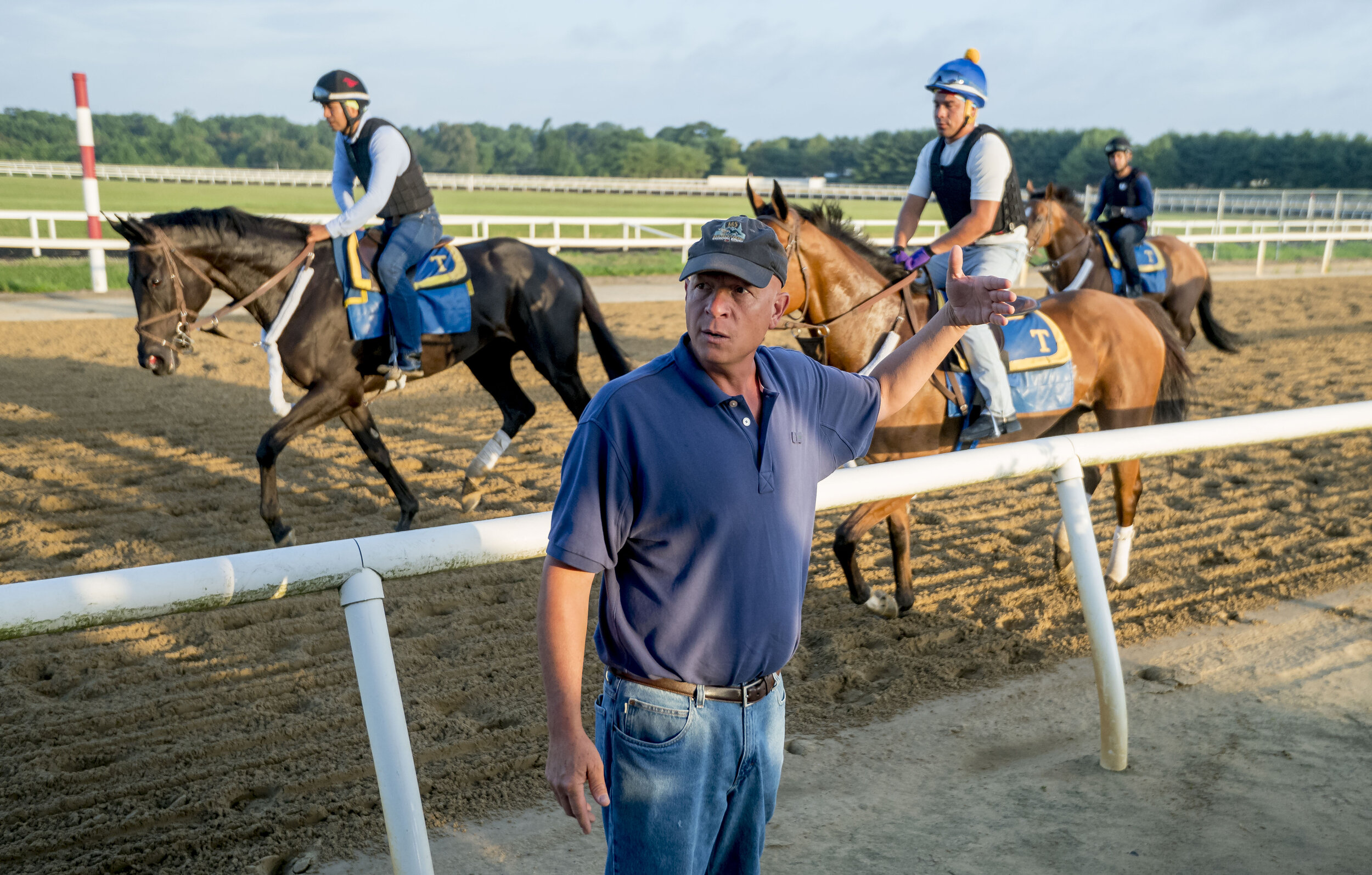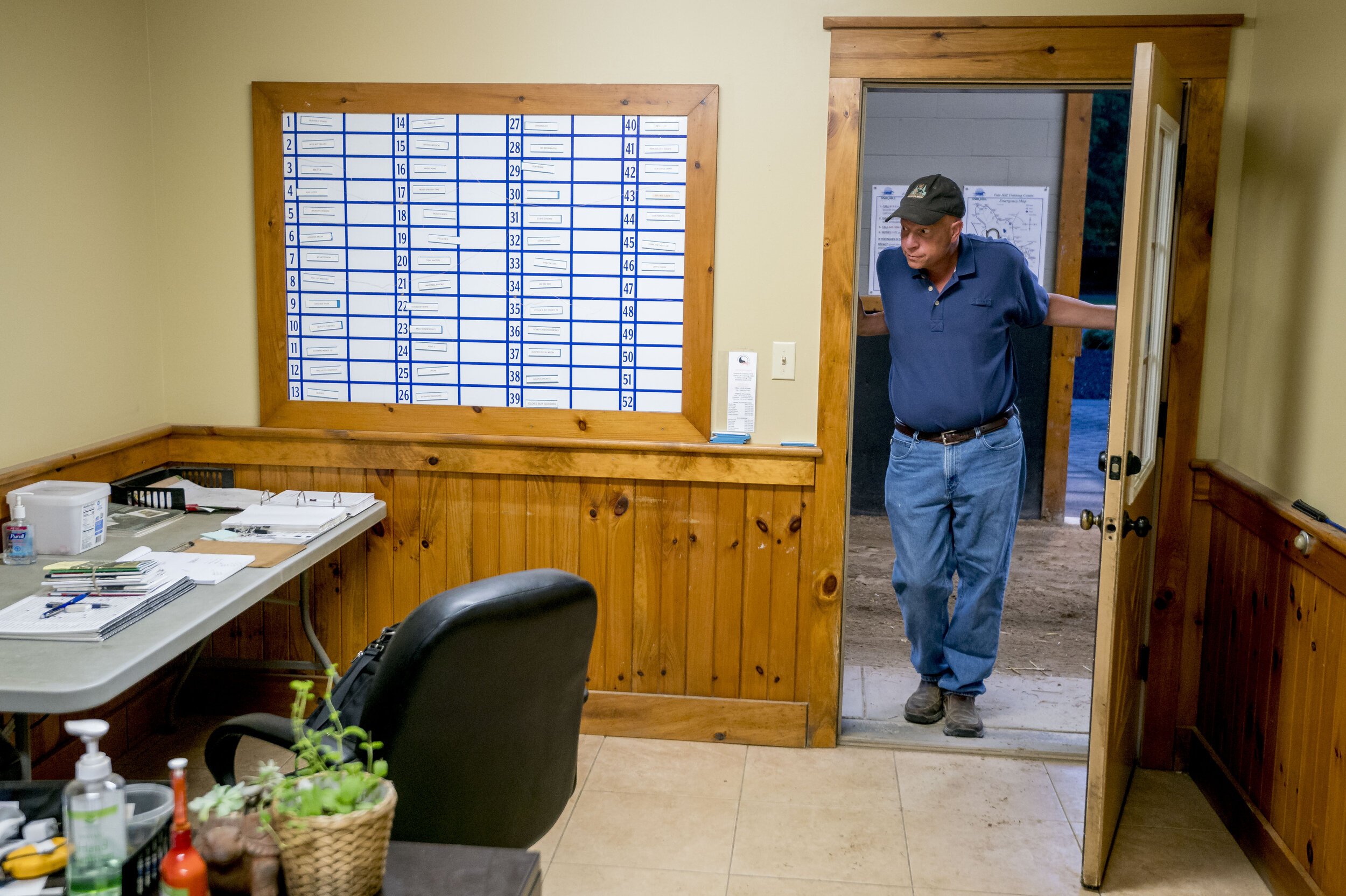Mike Trombetta - from demolishing buildings to constructing a racing stable with firm foundations
By Bill Heller
For the first 15 years of his 31-year training career, 55-year-old Mike Trombetta split every day between the racetrack and his brother Dino’s demolition company in White Marsh, Maryland. “He would train horses in the morning and knock down buildings in the afternoon,” his long-time friend and client R. Larry Johnson laughed. Dino added, “Then he’d go back to the track in the evenings just to check on things.”
Of course he did. That’s what he, Dino and their sister Laura learned from their parents. “Our dad worked extremely hard,” Dino said. “Both him and my mom were hard workers. That’s how we grew up. We worked hard in everything we did. That’s what it took to have success.”
Mike could still be working two jobs had he not had the good fortune to take over the training of a horse who had previously made just one start, finishing 12th by 24 lengths as a two-year-old in 2005. That horse, Sweetnorthernsaint, would go off the favorite in the 2006 Kentucky Derby, making a strong middle move under Kent Desormeaux before tiring to finish seventh. Sweetnorthernsaint then finished second in the Preakness Stakes. “That gave us national exposure,” Trombetta said. “That gave us a big push for sure.”
The following year, Trombetta’s starts increased from 312 to 422, his victories from 78 to 106 and his earnings from $2.7 million to $3.5 million. Trombetta abandoned his demolition career and began upward trending with his training. In 2019, he posted a career high in earnings—$4,614,509—helped by his three-year-old Win Win Win, who was ninth in the Kentucky Derby, and his two-year-old Independence Hall, who became a legitimate contender for the 2020 Kentucky Derby. Independence Hall ran into problems in 2020, but Trombetta still finished 24th in earnings with more than $4.1 million and a win percentage of 16.0. Trombetta has posted a win percentage of 20 or higher for an entire year 11 times.
But the past several months have been a bit rough. Through early June, he ranked 36th in the country in earnings with nearly $1.6 million. Yet he still is winning at a 16.4 percent rate. “We’re not doing that well,” he said on June 14.
“This year, it’s been an adjustment year coming off the COVID. We were hoping at the beginning of this year things would go back to normal. Then Woodbine got delayed. It got a little weird here. We had a herpes situation in Maryland. For several months, they wouldn’t let horses come in or leave. That was a bizarre situation. Then, at Laurel, they had to redo the track. We’re still not back to normal. It seems like something has been going on—something new to deal with. It’s hard for all of us.”
He feels the same way on the thorny issues of medication and whips. “I’m probably like a lot of other trainers,” he said. “What we’d like to have more than anything is a clear understanding of the dos and don’ts, especially in the Mid-Atlantic states. We just want to know what the rules are and how to play the game. When you turn on a football game, they all have fields of 100 yards and 15 minutes in a quarter. Horse racing is anything but that. It’s different in every state.”
That is about to change next summer when the Horse Racing Integrity Act comes to life. Will uniform rules become the norm? “We can hope,” Trombetta said. “Time will tell. It would be great just to get everybody knowing what the game looks like. Now, in every jurisdiction, there’s something different. We want to stay out of harm’s way. This Lasix thing is a great example. Two-year-olds can use it in one state, but not in another. I just hope the powers [that] be get something that works for the whole industry so that we can follow and understand. It’s the same thing with this whip rule. It’s different in other states. One state allows four times, one state says six; and in one state, they can’t use them at all. We’re getting further away from uniformity. Guys like us that are in this region race throughout the country for the most part. When you go through the stable gate somewhere else, it’s a different rule.”
Can the Horse Racing Integrity Act end that problem permanently? “In a perfect world, yes,” Trombetta said. “I don’t know if they’re capable of doing it.”
This summer, Trombetta’s horses—now between 80 to 90—are stabled at Far Hill, Timonium temporarily until Laurel’s renovations are complete and in
Delaware. His horses also race in Florida in the winter and in New York in the summer when they belong. His winter stable usually numbers 60 to 70 horses.
“We try to take the right horses to the right place,” Trombetta said. “We work off the condition books. There are little differences in each track. Obviously, when you go to New York, you have to know your horse is capable of competing in New York. We don’t get it right all the time, but we try. Surfaces come into play: dirt, synthetic, turf. You have to figure in all of the factors. I carry six, seven condition books with me.”
Is it like being back in school? “It can be at times, because it’s constantly changing,” Trombetta said. “I’m checking those things at 6 or 7 at night to make sure I can stay on top of it—make sure I’m not missing anything.”
CLICK HERE to return to issue contents or sign up below to read this article in full




